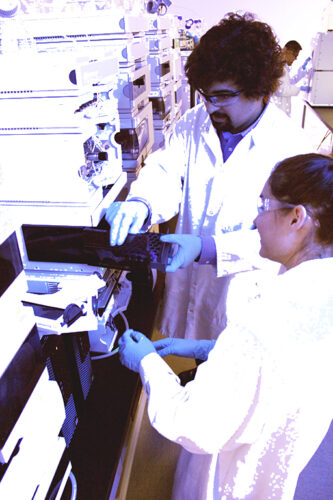 Effective method development is crucial for the quality control of Active Pharmaceutical Ingredients (API) and Drug Products (DP). Thorough method development enables successful downstream method validation.
Effective method development is crucial for the quality control of Active Pharmaceutical Ingredients (API) and Drug Products (DP). Thorough method development enables successful downstream method validation.
The regulatory guidance specifies that:
- Method development and validation vary by application (quantitative, qualitative, etc.).
- It is phase appropriate.
- The client may provide additional guidance/validation criteria.
- The validation guidance directs how AMD (analytical method development) is conducted.
Early Adoption of Forced Degradation Analysis
It is recommended that forced degradation be performed early in the method development lifecycle and that method parameters are suitable for mass spectrometry. This will prevent many issues that could occur in later stages and ensures the primary purity method is stability-indicating (specificity). When performing forced degradation, these considerations should be weighed:
- Always utilize a control sample without exposure to stressors.
- The stressors generally consist of acid, base, peroxide, heat, and photolytic conditions. Other stressors may be used based on known material incompatibility
- After exposing the compound to these stressors, target 5-20% degradation of the main peak.
- If degradation is not observed under reasonable conditions, then the material can be considered stable under those conditions.
Impurity Genesis and Identification Assessment
Acceptance criteria should be scaled to impurity levels. How can the method unequivocally assess the analyte of interest in the presence of likely impurities, degradants, and the sample matrix? Additional considerations include:
- Is the method capable of identifying and/or quantifying a specific compound?
- Are there solvents present that can interfere with potential impurities?
- Known impurities? Are the known impurities stable under the method conditions?
- Is the method specific for degradation byproducts for stability-indicating methods?
Cross-Platform Method Robustness
Robustness refers to a method’s ability to meet its analytical requirements (system suitability requirements) despite small variations of the method’s parameters, such as discrete changes to a column or sample tray temperature, percent organic modifier, flow rate, and detector wavelength. This capability is typically built into the method during method development.
Precision or Accuracy – You Need Both in Strong AMD
AMPAC Analytical development strategy involves the early adoption of forced degradation studies with the goal of every primary purity method being stability-indicating (specificity) and mass spectrometry compatible. The validation strategy is phase-appropriate and application-specific and guides the development strategy. The validation acceptance criteria guidelines are specific to the test methodology, intended use, and level. Finally, method lifecycle performance is assessed, and reevaluation or revalidation can occur.

Contact us today to learn how we can create accurate, precise method development for your API and DP pipeline.

